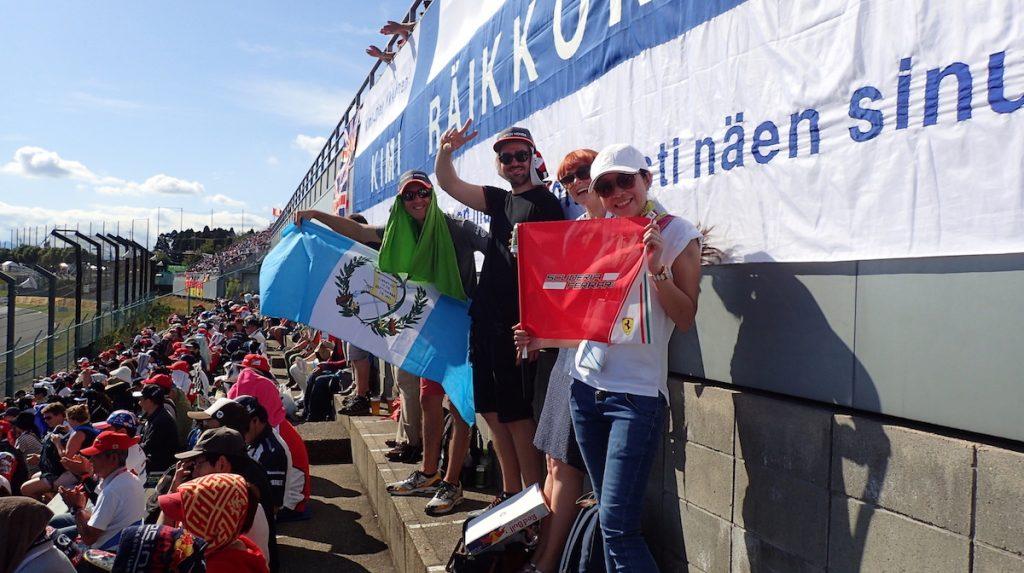
Last month, Richard travelled from Guatemala to Suzuka for his first live race. “The Japanese fans really do worship F1, and to be part of it was amazing,” he says.
I’m a huge fan of motorsport in general, but especially Formula 1. I watch all the sessions on every race weekend and read as much as I can online. But I had never been to a live race, until this year. I wanted to make my first F1 trip special, so I decided to go to Suzuka for the Japanese Grand Prix. If you’ve watched F1 for a while, you know what a special track this is.
I stayed in Nagoya for the race weekend. It’s a beautiful city with lots to do, and it’s easy to get to Suzuka, provided you stay close to the Nagoya train station. I recommend the Glocal Nagoya Backpackers, which was the best hostel I have ever stayed in. It was full of friendly F1 fanatics from around the world and I made some new friends.
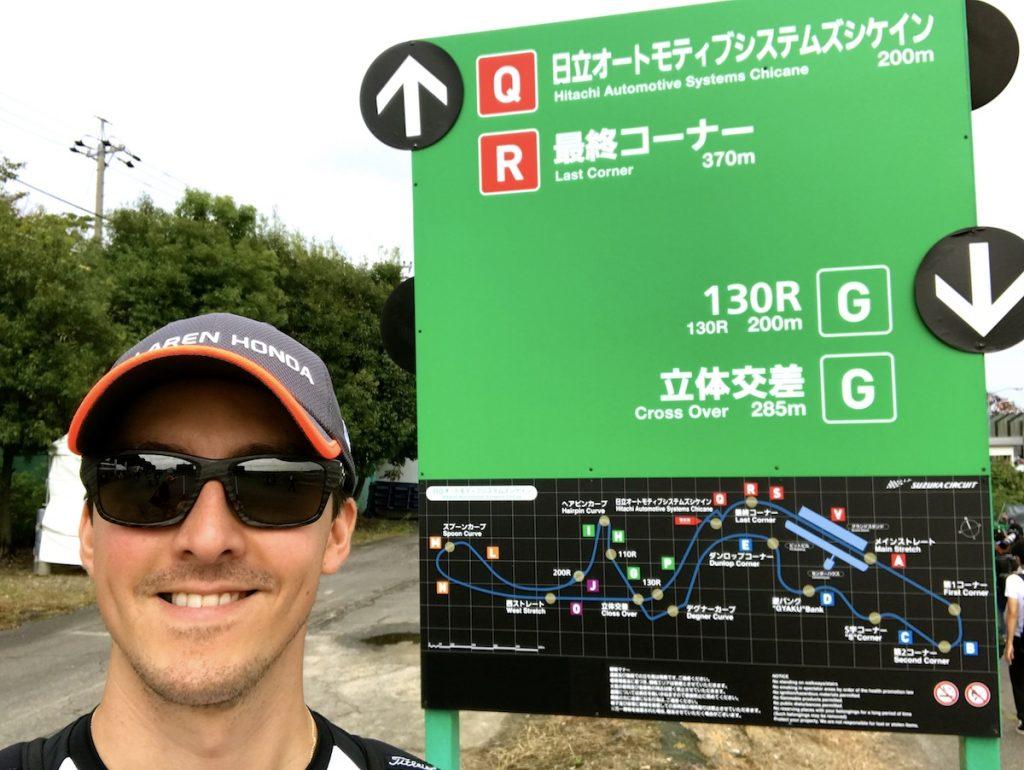
I used the Kintetsu rail pass for travelers to get to the circuit. This is valid for unlimited rides over 5 days around Nagoya and other cities, and costs around $40 USD. You can buy this from the special Kintetsu ticket area at Nagoya station, and there are English speaking tourist guides there to help you. The trip from Nagoya to Suzuka takes about 45 mins. You get off at Shiroko train station, then follow the signs outside the station to the circuit shuttle bus. Buy the return daily ticket (cost approx. $9 USD) to save you queuing at the end of the day. The shuttle takes around 15 minutes to get to the track.
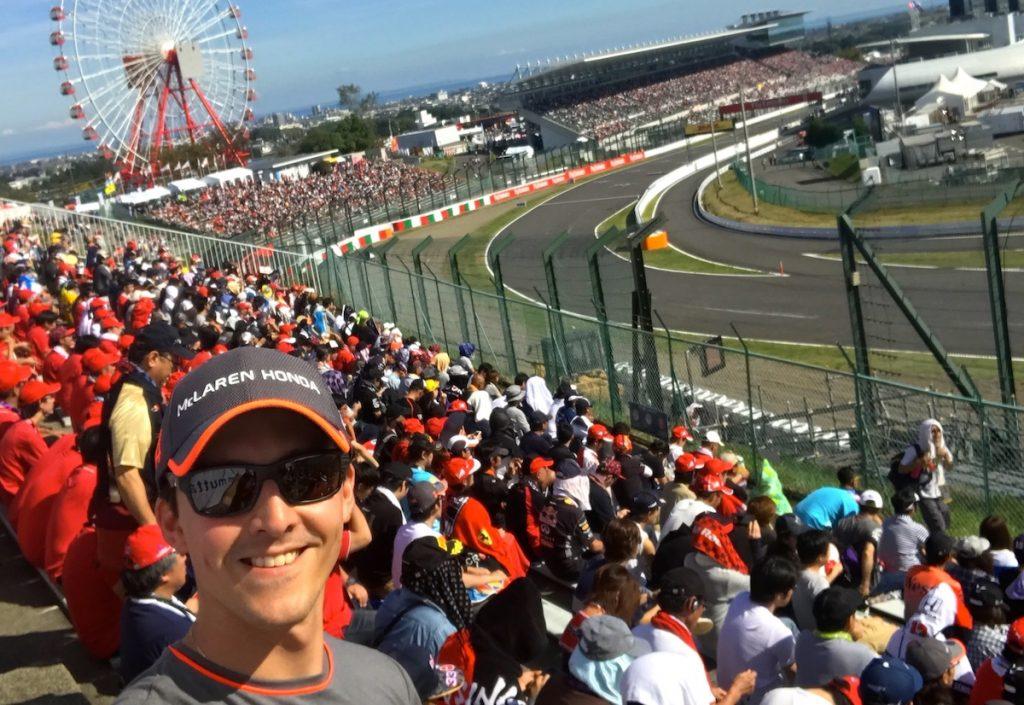
I bought my ticket with the help of F1Destinations. They were delivered to my home in Guatemala. There was an option to pick them up at the circuit, but as it was my first trip, I preferred to have them in my hand before I left. I sat in the Q1 grandstand, which turned out to be a great choice. It had food and drinks stands at the back, plus restrooms. The viewing from Q1 was very good. I could see the final chicane, entrance to the pits, and the start of the pit straight. My seat was right in front of a big screen TV, but I could also catch a glimpse of the cars going through the Dunlop Corners on the other side of the track. The grandstand was full, and the atmosphere was amazing!
I can’t describe my first impressions of Suzuka in words. It was an incredible feeling to finally arrive and experience the atmosphere of this incredible temple of F1 history. The Japanese fans really do worship F1, and to be part of it was amazing. The first thing I noticed walking into the track was the line of fans waiting for their favorite drivers to arrive, hoping to get a wave or quick selfie. I arrived around the same time as Kimi Räikkönen, and the fans were going crazy! Soon after entering I made it to the main plaza for a photo with the famous Suzuka logo. I was impressed with all the additional activities on offer, including a 40-lane bowling rink, theme park for kids, go-kart track, water park, hotels and restaurants. I’m not sure, but I believe the bowling, theme park and go-karts are all free with your F1 ticket.
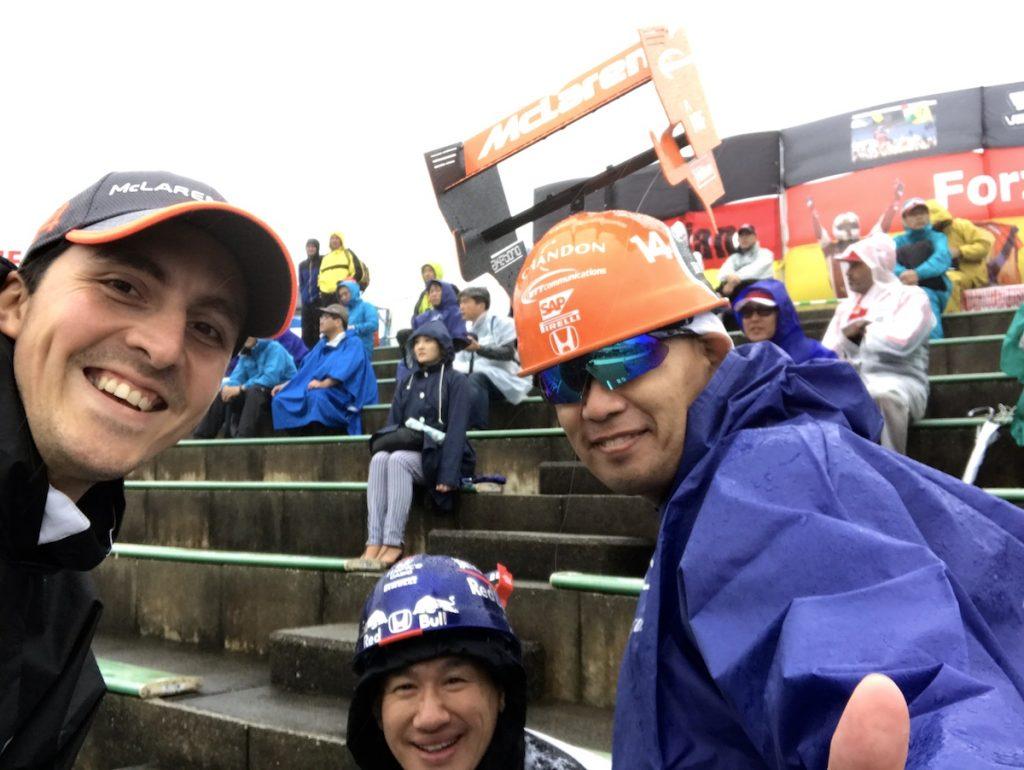
All the grandstands and the Main Plaza area at Suzuka offer free Wi-Fi, but it can be a little tricky to connect. If you don’t have a local carrier, you need to first visit an information tent near the Suzuka logo in the main plaza. The English-speaking workers there will also you to show your ID card, then issue you with an access code and password. The connection was super-fast. I was even able to speak to my family at home!
I was doubly excited on Friday, my first day at the track, as Suzuka offers “Free Friday” where you can sit in different grandstands and enjoy the whole circuit. Since Q1 is very close to the Famous 130R corner, I walked up to take a look. It’s in the General Admission area so it was really packed, but seeing the cars at top speed with passionate fans cheering was an experience to remember. From my seat, I could also hear the cheers from the fans in the main grandstand when Fernando Alonso hit the track. They really love him in Japan, and made a lot of noise every time he came out.
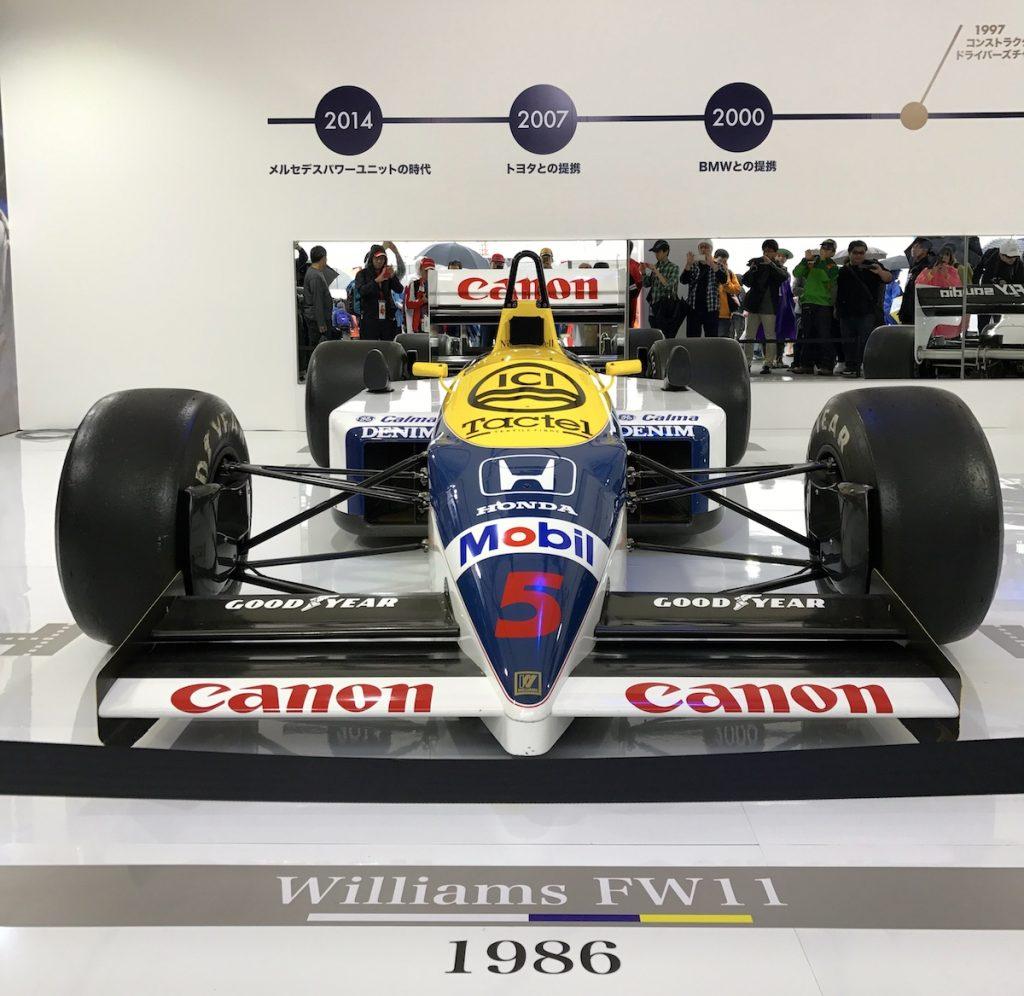
The support races from the Porsche Japan Supercup and Japanese 1.8 Formula series were really competitive, with lots of passing plus the added bonus of some crashes at the final chicane. This year, some classic There was always something happening in the Main Plaza area, where they had a stage set up for appearances by drivers, including Lewis Hamilton and Lance Stroll, plus local heroes Takuma Sato and Kamui Kobayashi. cars also hit the track, including a 1985 Williams Honda FW11 driven by Damon Hill and a Honda F1 RA273 from 1962 driven by Takuma Sato with a glorious V12.
At the end of the day on Saturday, they opened the track gates for the first time ever and fans were allowed to walk down the main straight and pitlane. It was incredible to see the cars up so close, and some were still being worked on by mechanics. It was pretty crowded though, and I didn’t even try to get close to the Mercedes or Ferrari boxes, which were being mobbed by the local fans. The weather was perfect on race day, with plenty of sunshine. I’ll admit that I even shed a few tears as the cars came past on their formation lap. Remembering all the great races I had watched at this circuit, I couldn’t believe that my passion had taken me all the way from Guatemala to this race in Japan!
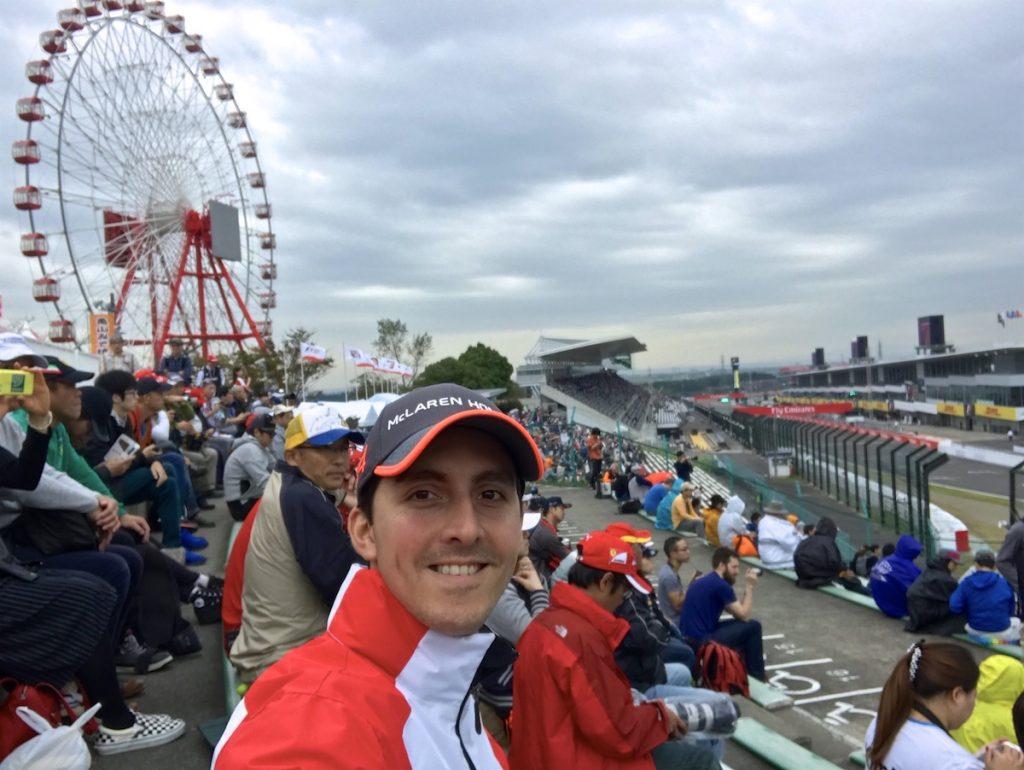
Since I had traveled so far, and it was my first time in Asia, I spent seventeen days in Japan. In addition to three days at Suzuka, I visited Kyoto, Tokyo, Kamakura, Nagoya and Mount Fuji. For the entire trip, I spent about $3,000 USD, including all flights, accommodation and spending money. I took a few days to explore Nagoya, which is beautiful. I visited the Nagoya castle and a local shrine, which were both easy to access on a local train. Even just walking the streets of Nagoya is interesting; it has lots of green spaces to explore, plus shopping, restaurants and nightlife.
As for the food, well there is a reason why Japanese cuisine has been awarded cultural heritage status by Unesco! I recommend trying the local dishes, but be sure to leave some room for sweets. Japanese cakes and baked goods are really tasty. I also visited Kyoto; the Fushimi Inari Shrine is a great place to experience traditional Japanese culture. No matter what you are interested in, Tokyo will have something to interest you. I also did a one-day trip to visit a charming seaside village called Kamakura, which is one hour away from Tokyo on the train. Travel in Japan is awesome, despite the language barrier. Tourists are treated very well and everyone is so friendly.
I would definitely recommend going to the Japanese Grand Prix! It’s a historic race where so many incredible championships have been won and lost; remember Senna and Prost? It’s a classic circuit that should be on the bucket list of every Formula 1 fan. The fans are incredible, there is lots to do at the track, the food is amazing and Japan is a fascinating travel destination. I would also like to say a special thanks to Andrew at F1Destinations for all his help and for answering my questions! It’s is a great resource if you are planning to experience a live F1 event.




Couldn’t agree more! Suzuka indeed is an amazing track! The fans are so passionate yet highly disciplined!
Travel time from Nagoya to the circuit, via Shiroko and the shuttle buses was about 90 minutes at the weekend, but about 2hrs on the Friday. Wifi registration required passport (phone registration doesn’t work for overseas mobiles so just ask at a info tent). Wifi doesn’t cover all grandstands so get a data sim if you want F1 timing app. FM radio commentary is available in English.
Thanks for the info Mick, hope you enjoyed the weekend!